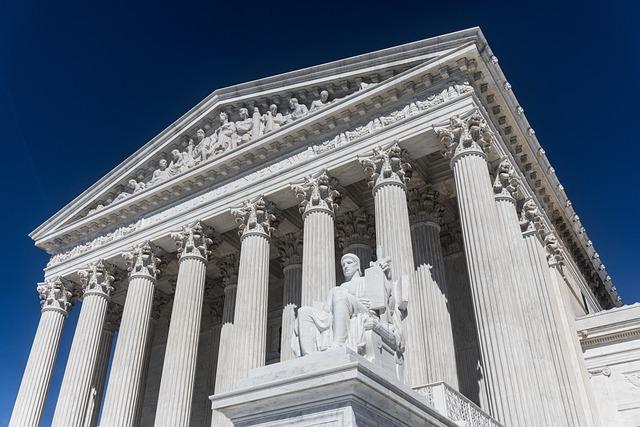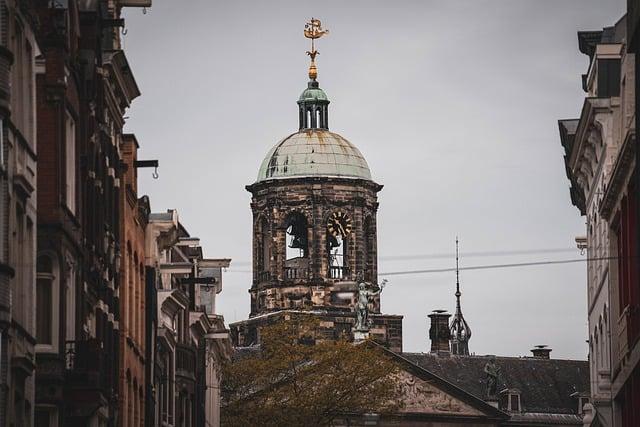As West Africa continues to navigate the complexities of modernization and cultural preservation, Togo reveals itself on the middle of a contentious debate surrounding its architectural heritage. From the colourful buildings that inform tales of a wealthy historical past to the crumbling edifices that stand as reminders of previous glories,the destiny of those structures has grow to be a battleground amongst native communities,executive officers,and conservationists. Must those websites be restored to their former glory, demolished to make means for brand spanking new trends, or left to decay quietly into oblivion? This text delves into the intricacies of this debate, analyzing the competing pursuits at play and the consequences for Togo’s identification and long run. As the decision to give protection to and rejoice cultural heritage grows louder, the query stays: what is going to be the legacy of West Africa’s architectural panorama?
The Cultural Importance of Architectural Heritage in Togo
The architectural heritage of Togo isn’t simply a choice of buildings; it encapsulates the essence of its cultural identification, historical past, and group values. From the intricately designed standard dust huts to the remnants of colonial structures, those bodily artifacts inform tales of resilience, adaptation, and birthday party. The preservation of those buildings holds profound importance for more than a few causes: cultural schooling, nationwide delight, and tourism doable. They function a tangible hyperlink to the previous, providing insights into the standard way of life, craftsmanship, and the socio-political historical past of togo.
Conversely, the talk surrounding the way forward for Togo’s architectural treasures raises contentious questions. Proponents of preservation argue that keeping up those websites is important for cultural schooling and the promotion of heritage tourism,which might bolster native economies. Critics, on the other hand, recommend for modernization, viewing some buildings as impediments to development. Within the face of such diverging views, it turns into an important to navigate this discourse thoughtfully, bearing in mind components that come with: group involvement, environmental affect, and financial viability. Putting a stability between keeping heritage and fostering construction would possibly in the end outline the cultural panorama of Togo within the years yet to come.
Dilemmas of Recovery vs. Preservation in West Africa

The architectural panorama of West Africa represents a wealthy tapestry of cultural identification and historical past, but it stands at a crossroads. The crucial to repair historic structures regularly clashes with the want to maintain their authentic state, growing a fancy quandary. Proponents of recovery argue that rehabilitating buildings can rejuvenate communities and advertise tourism, resulting in financial advantages. Regardless that, this point of view raises questions on authenticity and the prospective lack of authentic fabrics and designs.Preservation advocates emphasize the significance of keeping up heritage in its present state, viewing it as a testomony to the resilience and identification of native cultures amidst trendy adjustments.
As choices are made about which tasks to pursue, the danger of polarizing group critiques turns into palpable. Stakeholders are confronted with more than a few motivations that affect their positions, together with financial incentives, cultural delight, and environmental issues. Key arguments within the debate regularly come with:
- Financial construction: Recovery can draw in tourism, producing income.
- Cultural integrity: Preservation maintains the construction’s historic importance.
- Environmental affect: Issues on sustainability and ecological stability.
- Neighborhood involvement: Engagement of native voices in decision-making processes.
Those competing narratives create a fancy battleground for decision-makers, the place failed compromises may result in both ignored ruins or unchecked construction exactly within the puts that grasp the reminiscences and tales of generations. The architectural heritage of West Africa stands as each a problem and a chance, prompting pressing discussions on discovering a balanced manner between recovery and preservation.

Within the center of Togo, the combat over architectural heritage has sparked a heated debate that transcends mere preservation. Neighborhood engagement emerges as a pivotal power in figuring out the way forward for those buildings.The voices of locals, who possess wealthy historic wisdom and cultural ties to the websites, regularly conflict with exterior pursuits that can prioritize benefit over authenticity. To verify sustainable control of heritage websites,it’s certainly very important to contain group participants now not simply as passive observers however as energetic members.Their insights can information choices on whether or not structures must be restored, repurposed, or left untouched. Key sides of triumphant group involvement come with:
- inclusive Conversation: Fostering a dialog between stakeholders,together with native citizens,executive officers,and preservation mavens.
- Training and Consciousness: Providing coaching periods to tell the group in regards to the significance in their heritage and the consequences of more than a few control methods.
- Empowerment: equipping locals with the equipment and sources to recommend for his or her heritage successfully.
additionally, the combination of group comments may end up in leading edge answers that honor each heritage and trendy wishes.Adopting a collaborative framework encourages sustainable practices, making sure that choices are made with a complete working out of the social, financial, and environmental context. A recent study outlined some great benefits of such engagement, detailing a success case research from the area:
| Case Learn about | Neighborhood Involvement | Result |
|---|---|---|
| undertaking A | Workshops for native artisans | Revitalized craftsmanship and tourism |
| Challenge B | Village assemblies for resolution making | Preserved historic websites as group landmarks |
| Challenge C | Collaborative cultural fairs | Enhanced group delight and heritage consciousness |
The Function of Govt and NGOs in Architectural Conservation

Within the intricate tapestry of architectural conservation in West Africa, the collaboration between executive entities and non-governmental organizations (NGOs) stands at the vanguard. Governments play a crucial position through creating insurance policies that now not most effective acknowledge the historic importance of architectural heritage but additionally allocate budget for preservation tasks.Efficient regulation can identify frameworks that give protection to websites from forget and unauthorized alterations, making sure that their price is preserved for long run generations. On the other hand, the bureaucratic nature of presidency processes regularly results in delays, permitting many buildings to fall into disrepair.Key duties of governments come with:
- Drafting and imposing preservation regulations
- Offering monetary sources for recovery tasks
- Facilitating public consciousness campaigns in regards to the significance of heritage
Concurrently going on, NGOs supplement governmental efforts through performing as watchdogs and advocates for architectural conservation, ceaselessly sufficient filling gaps left through state movements. They have interaction native communities in preservation efforts, making sure that some great benefits of conservation are felt on the grassroots degree. NGOs additionally serve to lift world consciousness and draw in investment thru world networks. This partnership permits for a extra holistic method to conservation, the place group voices are built-in into decision-making processes. The affect of NGOs will also be summarized as:
- Mobilizing communities for native preservation efforts
- Securing grants and donations for recovery
- Undertaking analysis and documentation of heritage websites
World Views on Heritage Coverage and Classes for Togo

The continued debate surrounding architectural heritage in Togo displays a broader world discourse on how countries can successfully give protection to their cultural legacies amidst trendy demanding situations. Throughout more than a few continents, many nations grapple with balancing construction wishes and heritage preservation. A success methods ceaselessly sufficient include engaging local communities within the decision-making procedure. Such endeavors make certain that heritage is seen now not simply as a relic of the previous however as a residing a part of the group. For example, collaborative frameworks involving government, NGOs, and voters have confirmed really useful in puts like Italy and Japan, the place stakeholders paintings in combination to revive or repurpose historic websites, fostering each cultural delight and financial construction.
In analyzing the teachings realized from world examples, Togo can draw inspiration from leading edge approaches that experience effectively merged structure, tradition, and conservation. Key methods from world practices that might tell Togo’s heritage coverage come with:
- Inclusivity: Contain various group voices in heritage preservation efforts to create a shared narrative.
- Training: incorporate heritage research into curriculums to domesticate a way of possession and appreciation amongst more youthful generations.
- sustainable Tourism: Expand tourism tasks that spotlight heritage websites whilst making sure the preservation in their cultural importance.
encouraging a multi-faceted approach ensures that Togo’s architectural heritage isn’t a supply of department however a basis for harmony and sustainable construction. Through leveraging classes from world practices, Togo can navigate its distinctive demanding situations whilst keeping the wealthy tapestry of its historic and cultural identification.
Long term Imaginative and prescient: Balancing Building and Heritage Conservation

As towns in Togo and throughout West Africa proceed to adapt, the problem of integrating trendy infrastructure with worthwhile historic websites is at the vanguard of city making plans discussions. Putting a stability between the need for construction and the preservation of wealthy architectural legacies is an important. Stakeholders from executive our bodies, native communities, and conservationists will have to collaborate to plan leading edge methods that now not most effective appreciate those buildings but additionally beef up their cultural importance. The luck of such tasks rests on acknowledging that heritage conservation can coexist with fresh wishes, fostering a colourful city surroundings with out sacrificing identification.
decision-making on this regard regularly falls into an ethical quagmire, leading to polarized perspectives inside of communities. To successfully navigate this complexity, a number of key issues must be tested:
- Neighborhood Engagement: Contain native populations within the making plans procedure, making sure that their voices are heard and their wishes addressed.
- Adaptive Reuse: Discover alternatives to repurpose historic structures for contemporary purposes, giving them new existence whilst keeping their essence.
- Training and Consciousness: advertise working out of the significance of heritage websites and their contributions to cultural identification and tourism.
An manner that champions sustainability, whilst prioritizing heritage conservation, may end up in resilient towns that honor their previous whilst having a look towards the long run. The trail ahead will have to be guided through appreciate for historic contexts and a imaginative and prescient that embraces development responsibly.
In Abstract
As the talk over West Africa’s architectural heritage intensifies,Togo stands at a crossroads that displays broader regional tensions. The competing visions of recovery, destruction, and forget now not most effective form the bodily panorama but additionally affect cultural identification and historic reminiscence. Stakeholders—starting from native communities and preservationists to builders and executive officers—will have to navigate a fancy terrain the place the previous and long run collide. The selections made these days in Togo will resonate thru generations, underscoring the significance of considerate discussion and collaborative efforts to make certain that the wealthy tapestry of West Africa’s architectural heritage is preserved, celebrated, or respectfully reimagined.As we witness those struggle traces being drawn, the result will considerably affect now not most effective Togo but additionally the area’s cultural legacy as a complete. The dialog is a long way from over, and it is going to be very important to stay advocating for an manner that honors the intricate tales embedded inside of those partitions.
Source link : https://afric.news/2025/03/06/restore-destroy-or-leave-to-rot-battle-lines-drawn-over-west-africas-architectural-heritage-togo-the-guardian/
Creator : William Inexperienced
Put up date : 2025-03-06 17:27:00
Copyright for syndicated content material belongs to the connected Source.



